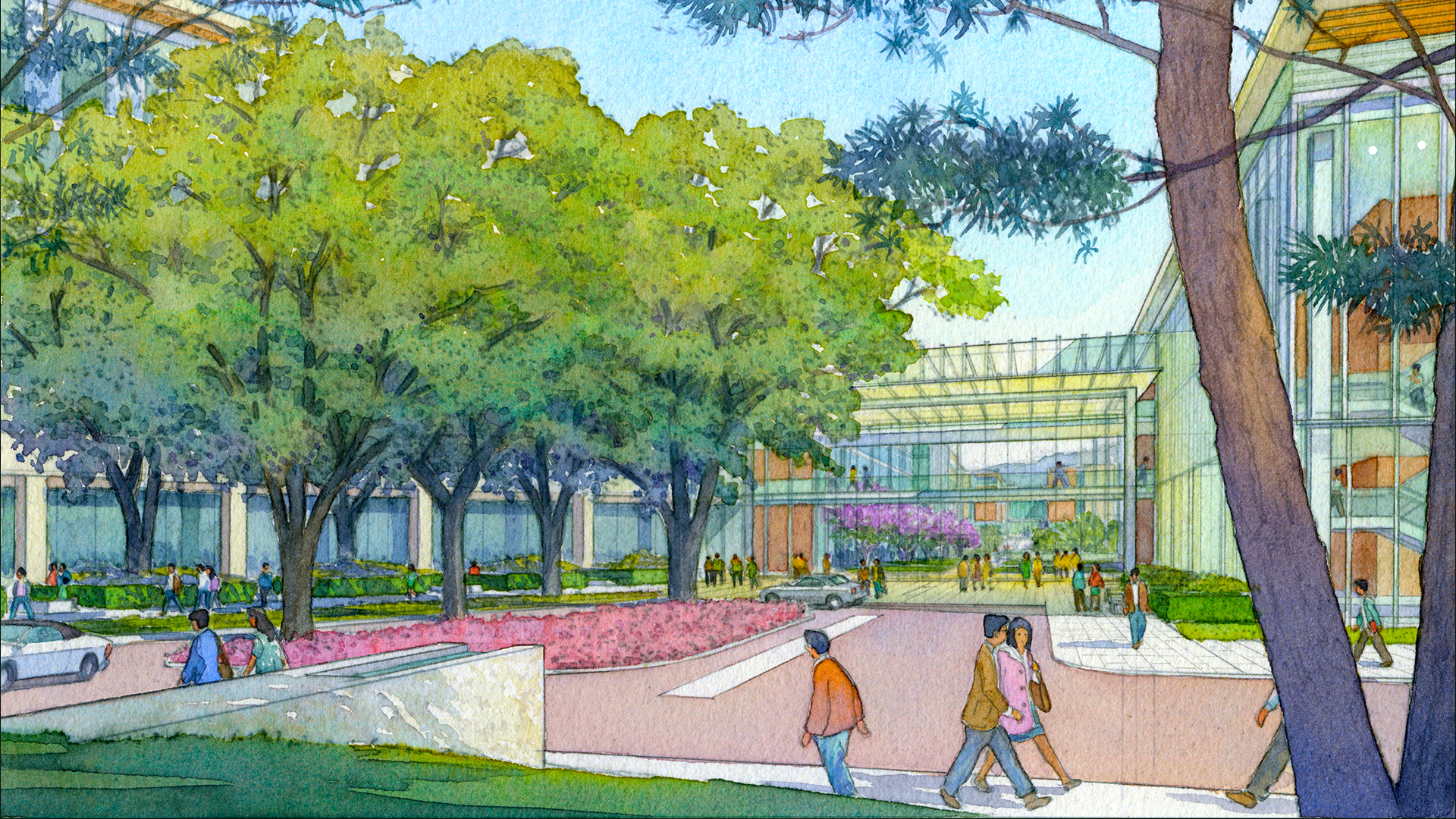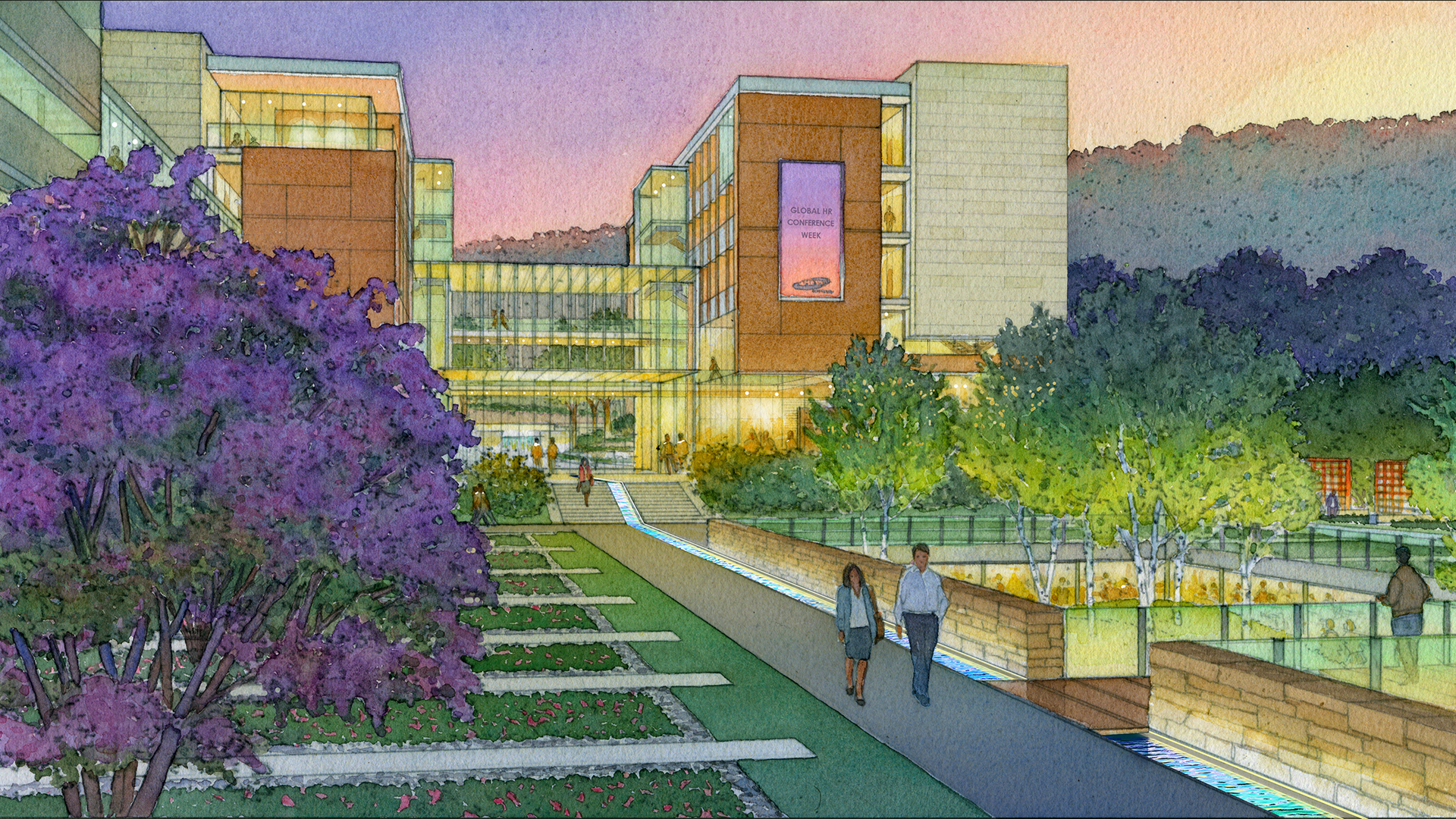Evolving trends in technology and the need to build a new, state-of-the-art Electronics Training Center allowed Samsung to commission the collaborative team of Samoo Architects and Thomas Balsley Associates for the design of their new facility in Keyonggi-Do Province in Korea. Essential to both Samsung and the design team was a site design solution that would be seamlessly integrated into its natural rural environment as well as foster effective sustainable strategies.
Nestled at the base of wooded hills in a natural ravine, the promontories of the training center’s site feel the warm embrace of its natural environment. The landscape concept invites the natural vegetation into the center’s perimeter edges to help blur the lines of the manmade and natural landscape. That same landscape of ravine and promontory has inspired the reinterpreted versions that are employed throughout the campus.
Metaphorical forest “fragments” strike a dialogue with the “built” landscape within. This act of replication is revealed in combination with the mounded forms and small hills that take the cue from the adjoining topography. More formalized plantings complement the landscape courtyard’s hardscape whose skeletal system expresses architectural modulations and sensibilities into a refined landscape language. As social spaces, the courtyard is dressed in more formal and sophisticated planting arrays that bring visual interest throughout the seasons.
As a central theme, the concept of water traverses the site from east to west as an organizing site element. Taking different forms with different purposes, water is embedded into the campus landscape concepts. The most meaningful and powerful expression is that of the “mountain stream” or rill. As one might expect of a ravine, the stream is the connective link between the hills and their valleys and the behind world. The strength of its straight-line geometry and the accompanying light effects will become one of the most provocative and memorable aspects of a visit or stay on campus. At each subtle change in outdoor elevation, the water’s effects are diversified, sometimes for visual and sometimes for audio effects.
Medgar Evers College Campus Quad
Since its founding in the 1960s, Medgar Evers College has been a central figure and source of pride for Brooklyn’s Bedford Stuyvesant community. Its reinvigoration, spurred by a rapidly expanding student body, began ten years ago with a campus master plan, prepared by Ennead Architects and Thomas Balsley Associates. In addition to new facilities, the plan fore...
Tarrant County College
To meet the growing needs of the downtown and North Main communities in Fort Worth, Texas, SWA provided the master plan and landscape design for a new college campus to add to the Tarrant County College District. Designed to be constructed in a series of phases, the project aims to provide a stimulating and rewarding environment for students and the local comm...
Sonoma State Weill Lawn & Commons
Weill Lawn and Commons provide outdoor performance venues at Green Music Center, a world-class performing arts complex. The landscape architects prepared overall master planning and landscape architectural design. A simple, dramatic grading plan unifies project elements, directs circulation, and buffers concert venues from adjacent roadway traffic. Weill Lawn...
Tokyo University of Foreign Studies Campus
Tokyo University of Foreign Studies Campus Fuchu, Japan. Landscape International, Ltd. Kume Sekkei, Architects. NBBJ Architecture. SWA provided master planning and landscape architecture for the Foreign Studies Campus of Tokyo University on the site of a former military base on the outskirts of Tokyo. This campus serves Japanese and foreign students pursuing a...






